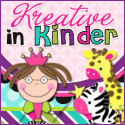I am so excited to be participating in this book study on the book
The Next Step in Guided Reading: Focused Assessments and Targeted Lessons for Helping Every Student Become a Better Reader
I was really excited because I was able to get the book on my kindle. I love reading professional development books on my kindle because it is so much more portable and it's also a lot cheaper. The downside is it is hard to flip through the book and find something quickly and I can't share it like I could a paper book. (Although I have discovered I can share The Book Whisperer and Growing Readers with a friend of mine.) As a side note, there are lot of forms and such in this book. I did discover that you can get a pdf download of the forms through the scholastic. I just opened the book on the kindle cloud reader on my computer and then clicked where it said get a pdf download. I was very happy.
I don't think guided reading is one of my strengths. I'm good at reading with the kids and working on things with them, but I'm not always good at being really intentional about my groups and planning. This is something I really want to work on. Especially because we've been given a framework to work on this year that involves tiers of RTI. Guided reading to me fits this perfectly.I'm excited to read this book because it gives practical information and actual lessons to follow.
Richardson starts in the introduction by giving the four elements of guided reading:
- analyzing reading assessments to id an instructional focus
- prompting students to use reading strategies when they encounter difficulties
- teaching skills that are necessary and appropriate for the reading stage
- utilizing guiding writing to support and accelerate the reading process
The first chapter is all about preparing for guiding reading. I really like that Richardson emphasizes that students need to learn to work together, read together and laugh and play together.I found this past year that my students really struggled with what it means to work together. I hope that if I start this from the beginning I'll be able to foster an environment that is conducive to that. (Any suggestions for building teamwork would be appreciated.)
Richardson includes a great chart in this chapter that outlines the different approaches of reading and the grouping, text level, how text is read, and purpose. I plan to print this out and include it in my lesson planning notebook. The approaches to reading are shared, read aloud, small group and independent. Each approach has a place in the classroom. We should be doing a balance of all 4.
The meat of this chapter is about setting up independent learning activities. Last year in first grade, I tried a daily 5 approach, but in kindergarten I really like using literacy stations. I like the 6 week routine that Richardson lays out for introducing literacy stations. She has a very gradual introduction and recommends using tub activities like puzzles, math manipulatives, clay, legos, block, and art projects. Set a time for 10 minutes and have the students work on one of the tubs. Set back and observe and then meet with the students afterwards. You do this each day for a week with each group using a different tub. The next week you introduce one station activity to a group and the rest of the groups work on the tub activities. By week 3 you introduce a new work station activity and lengthen the time to 15 minutes. So now you have 2 workstation activities going on and the rest of the groups are using the tubs. Week 4 you introduce another activity and extend the time to 20 minutes. By week 5, students are working from 25-30 minutes and you add 2 new workstations.Students will also rotate through 2 workstations during the period. By week 6 you have all students working in work stations and don't use the tubs anymore. Richardson suggests starting groups this week, but I personally would probably wait until the next week. Then this gives the students time to be working on workstations and I can observe.
One of the biggest points, she makes in this chapter to establish the routine that students can't interrupt you while you are meeting with a group. She suggests wearing some kind of silly hat that will help the kids see that they shouldn't intrupt you. I used to wear a crown and should probably find something else along those lines.
Richardson finishes up this chapter with a lot of suggestions about managing literacy stations and things that the stations could be. I thought I'd finish this post up with a few pins from pinterest that related to this.
This pin shows a neat way to manage the groups. You use a file folder, velcro and paper. Then you can move the names around without having to start a new sheet.
These are the big ideas that I took from this chapter. Be sure to head over to Kreative in Kinder for the party and check out what other people had to say about the book.







I'm so excited to check out the 6 week plan for introducing literacy stations to kinders. Thank you for sharing!
ReplyDelete